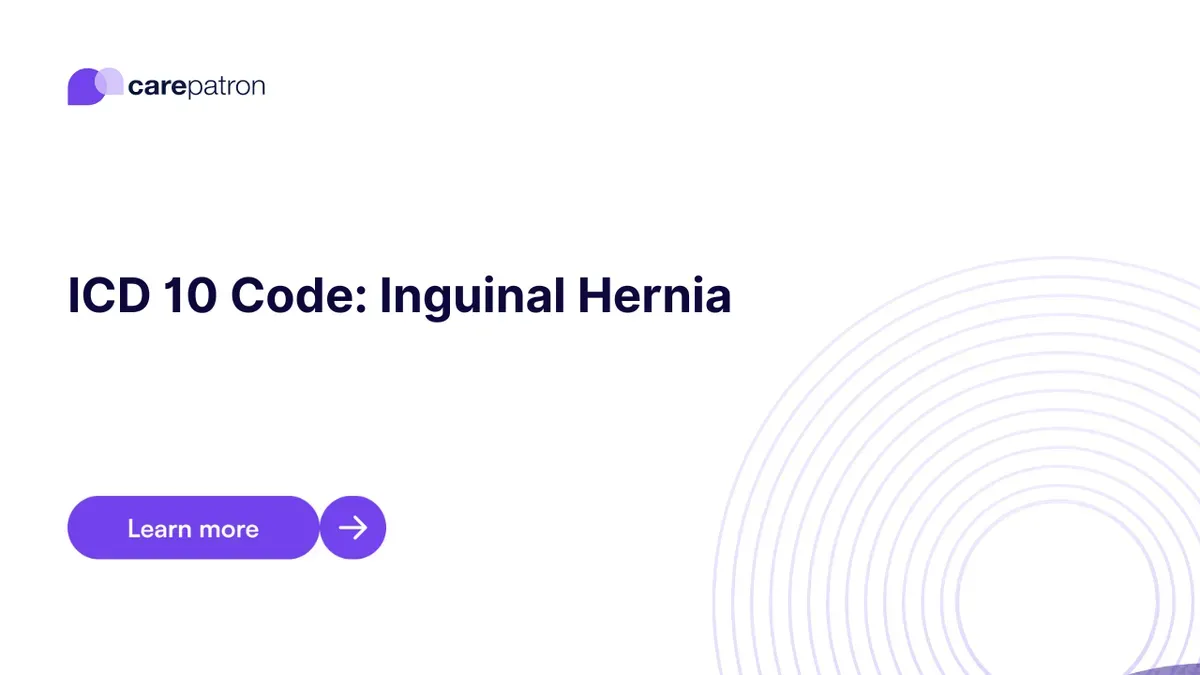
Inguinal Hernia ICD-10-CM Codes
Read our comprehensive guide to ICD-10-CM codes for diagnosing inguinal hernias, a common condition affecting the groin area, in 2023.
Use Code
Commonly asked questions
ICD-10-CM codes for inguinal hernia should be used during medical documentation for diagnosis, treatment planning, and billing. They help standardize the condition for effective medical care and data collection.
Common treatments usually involve surgical repair, known as herniorrhaphy or hernioplasty. Milder cases may be managed with lifestyle changes such as weight management and avoiding heavy lifting.
A diagnosis code for inguinal hernia categorizes the condition based on factors such as the presence of obstruction or gangrene, and whether it is unilateral or bilateral. This standardization is crucial for determining the appropriate treatment plan and is also used for billing and insurance claims.
EHR and practice management software
Get started for free
*No credit card required
Free
$0/usd
Unlimited clients
Telehealth
1GB of storage
Client portal text
Automated billing and online payments
